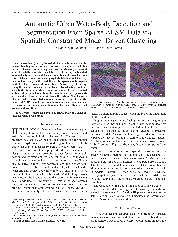摘要
Identifying hydrological features is important for urban planning and disaster assessment. Data spatial resolution poses challenges in automatic processing. In this letter, we present a novel spatially constrained model-driven clustering method that automatically detects and delineates water bodies in an urban area using airborne laser swath mapping (ALSM) data and imagery. Our method analyzes the modality of the sparseness histogram to decide the existence of water body, followed by clustering. Using the sparseness, clusters are decided by selecting candidate sites. In the iteration of clustering process, new sites are recruited within a close spatial vicinity of the boundary sites. Experiments were conducted using data sets from the city of New Orleans. Our method demonstrated superior robustness regardless of the density of ALSM sample and data discrepancy and very competitive accuracy in comparison with manual tracing, with an overall accuracy above 98%.
- 出版日期2011-1
